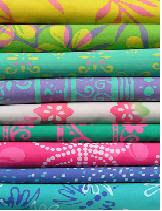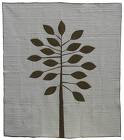Natural fibers
Natural fibers include those produced by plants, animals, and geological processes. They are biodegradable over time. They can be classified according to their origin:
Vegetable fibers examples include Seed fiber- cotton, hemp, jute, flax, ramie, and sisal
Animal fibers generally comprise proteins; examples include silk, wool, angora, mohair, spider silk, sinew, alpaca, catgut, wool and hair such as cashmere, mohair and angora, fur such as sheepskin, rabbit, mink, fox, beaver, etc.
Animal hair (wool or hairs): Fiber or wool taken from animals or hairy mammals. e.g. sheep's wool, goat hair (cashmere, mohair), alpaca hair, horse hair, etc.
Silk fiber :Fiber collected from dried saliva of bugs or insects during the preparation of cocoons. Examples include silk from silk worms.
Avian fiber: Fibers from birds, e.g. feathers and feather fiber.
Human-made fibers
Synthetic or man-made fibers generally come from synthetic materials such as petrochemicals. But some types of synthetic fibers are manufactured from natural cellulose, including rayon (Rayon is a very versatile fiber and has the same comfort properties as natural fibers), modal, and the more recently developed Lyocell
Polymer fibers
Polymer fibers are a subset of man-made fibers, which are based on synthetic chemicals (often from petrochemical sources) rather than arising from natural materials by a purely physical process. Such fibers are made from: polyamide nylon, polyester
Micro fibers
A micro fiber refers to synthetic fibers (fiber) that measure less than one “denier”. The most common types of micro fibers are made from polyesters, polyamides (nylon), and or a conjugation of polyester and polyamide.
Micro fiber is used in the manufacture of non-woven, woven and knitted textiles. The shape, size and combinations of synthetic fibers are selected for specific characteristics, including: softness, durability, absorption, wicking abilities, water repellency, electrodynamics, and filtering capabilities.
Micro fiber is commonly used for apparel, upholstery, industrial filters and janitorial products.
Monday, December 15, 2008
Fiber
Labels:
cotton,
Human-made fibers,
microfibers,
natural fibers,
rayon,
silk
Thursday, December 11, 2008
Haute Couture , High Fashion


Haute couture –(French for "high sewing" or "high dressmaking" or “high-fashion”;) A couture garment is made to order for an individual customer, and is usually made from high-quality, expensive fabric, sewn with extreme attention to detail and finish, often using time-consuming, hand-executed techniques. Look and fit take priority over the cost of materials and the time it takes to make.
We offer the custom made dress,dinner, evening & bridal to match your taste, size and budget; and with our advice, to your choices, we guarantee the most successful look. We will bring out your inner beauty and proud on your special moment. Make Your Special Day Become a Special Moment and Make Your Fantasy Come True with Us.
Labels:
dress,
evening,
gown,
High Fashion,
Houte Couture,
Perkahwinan,
Wedding
Tuesday, December 9, 2008
History of Batik in Malaysia
 It not easy to narrow down or trace since a few version about the origin of batik in Malaysia but what did I found out is the Malaysian batik origin is from Indonesia (Proven by earlier Malaysian batik design of sarong were very much influenced with Indonesian inspired designs) spread to Tanah Melayu in 1920s with technique is also known as ‘batik chop’ or “batik terap”-(using stamp to produced batik) and being start produced in east coast Kelantan .In earlier 1930s batik producer in Kelantan still using the wooden blocks and using natural color but in 1950s copper blocks and tin blocks are been introduced.
It not easy to narrow down or trace since a few version about the origin of batik in Malaysia but what did I found out is the Malaysian batik origin is from Indonesia (Proven by earlier Malaysian batik design of sarong were very much influenced with Indonesian inspired designs) spread to Tanah Melayu in 1920s with technique is also known as ‘batik chop’ or “batik terap”-(using stamp to produced batik) and being start produced in east coast Kelantan .In earlier 1930s batik producer in Kelantan still using the wooden blocks and using natural color but in 1950s copper blocks and tin blocks are been introduced.‘Batik tulis’ or “batik lukis” or hand drawn batik in Malaysia were introduced ,firmly believed by Master or “Sifu” of batik Wan Nong Ahmad in year 1970s in Kuala Lumpur .The first batch of apprentice under Wan Nong Ahmad to learn and produced hand drawn batik in Malaysia -Azman,Md.Noor and Salleh and the second batch –Hishamudin Ahmad, Khalid Shamsuddin Arshad and Rahman Rani.In the year 1970s also the using of batik stretcher or frame adopting from Japanese Kimono dyeing techniques. It different from Indonesian hand drawn batik, the dyeing process without using stretcher or frame.
In year 1980s in hand drawn batik was introduced by “Overlap” technique of coloring or dyeing which mean more than one layer of wax and color are using compare to previous technique where just a layer of wax with few color are used. Who’s the first batik artist to create “Overlap” technique? I have no idea about that cause many batik artist blaming that they are the first in the market.
Nowadays Malaysian batik has developed its own particular aesthetic, recognizable by it distinguishes pattern and vivid colors.
Batik Dying /Coloring Process
Batik Dying /Coloring Process
1. Preparation of color
Dilute the color with water till get the needed color either solid dark or just light color. Test it on plain white fabric first.
2. Coloring
By using the color brush, paint the enclosed area with the needed colors.
3. Color Fixing
When the color is dry completely, apply a layer of SODIUM SILICATE on the fabric to fix the color and leave it for at least 4-8 hours .The colors will be durable and will not fade easily.
4. Boiling
Put some SODA ASH in the water and boil the fabric for few minutes. The sodium silicate will be removed from the fabric.
5. Drying
Hang the fabric for drying
*Dying only can absorb by fabrics with natural fibre ..(eg, 100%cotton, 100 %silk.) Other fabrics with polyester element won’t absorb!*
1. Preparation of color
Dilute the color with water till get the needed color either solid dark or just light color. Test it on plain white fabric first.
2. Coloring
By using the color brush, paint the enclosed area with the needed colors.
3. Color Fixing
When the color is dry completely, apply a layer of SODIUM SILICATE on the fabric to fix the color and leave it for at least 4-8 hours .The colors will be durable and will not fade easily.
4. Boiling
Put some SODA ASH in the water and boil the fabric for few minutes. The sodium silicate will be removed from the fabric.
5. Drying
Hang the fabric for drying
*Dying only can absorb by fabrics with natural fibre ..(eg, 100%cotton, 100 %silk.) Other fabrics with polyester element won’t absorb!*
Friday, December 5, 2008
Subscribe to:
Comments (Atom)


